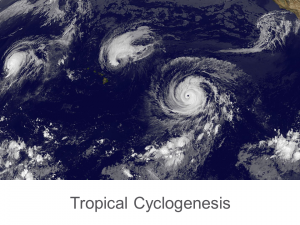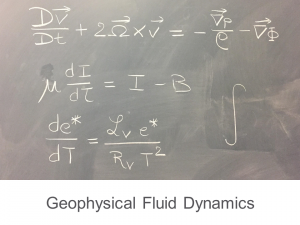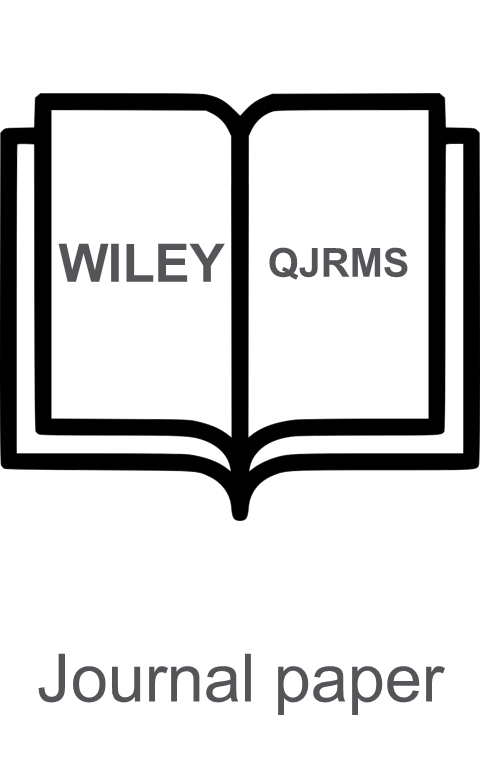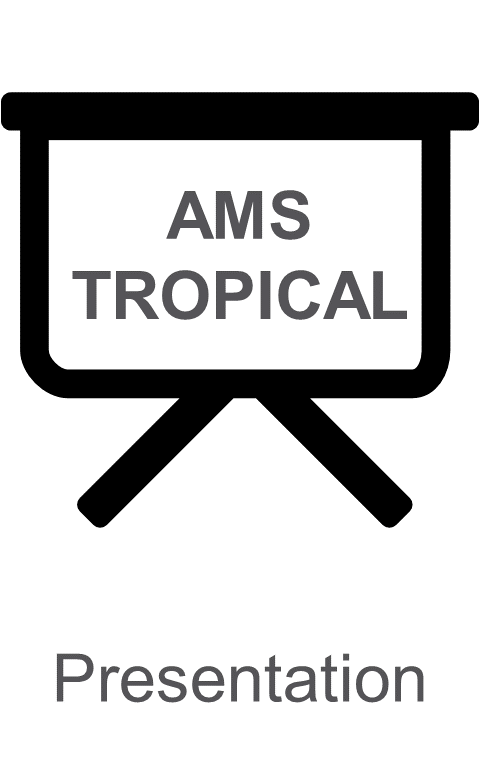
Deep Learning for Convection and Clouds
The largest source of uncertainty in our predictions of the future climate stems from how clouds respond to warming. Although global storm-resolving models cannot be run to predict the future climate before the middle of the 21st century, they provide enough data to imitate how storms and clouds behave using deep learning algorithms. The neural-network representation of storms and clouds can then be used in current global climate models to make more accurate predictions of the future climate. While my postdoctoral work focused on combining deep learning and physical knowledge to improve neural network models of clouds and storms, I am more generally interested in how modern machine learning tools can assist climate science (see my book chapter review and the US CLIVAR Data Science webinar series I co-organized).
Machine Learning for Clouds and Climate (2020-Present)
What are the main machine-learning approaches to model and understand clouds and climate using large datasets?
Generative Modeling for Atmospheric Convection (2019-Present)
Can generative models emulate the details of small-scale storms in atmospheric models?
Climate-Invariant Nets: Physical Rescalings Help Neural Networks Generalize to Out-of-Sample Climates (2019-Present)
Can we use physics to help neural network models of storms and clouds generalize to out-of-sample climates?
Assessing the Credibility of Deep Learning to Power the Next Generation of Climate Models (2018-Present)
Can neural network models of storms and clouds be used in realistic, Earth-like climate simulations?
Deep Learning for the Parametrisation of Subgrid Processes in Climate Models (2020-Present)
What are the principal approaches for neural-network emulators of clouds in climate models?
Enforcing Analytic Constraints in Neural-Networks Emulating Physical Systems (2019-Present)
How can we enforce strict constraints in neural-networks emulating physical systems?
Interpreting and Stabilizing Machine-Learning Parametrizations of Convection (2019-2020)
How can we adapt machine-learning interpretability tools to interpret and stabilize neural-networks models of storms and clouds?
Towards Physically-Consistent, Data-Driven Models of Convection (2019-2020)
How can we design physically-consistent data-driven models of storms and clouds?
Achieving Conservation of Energy in Neural-Network Emulators for Climate Modeling (2019)
How can we enforce mass and energy conservation in neural-network emulators of clouds for climate models?

Radiation and Convection
Radiation and convection can interact with atmospheric water to change the planetary-scale hydrological cycle and winds, but we don’t know by how much because this interaction is complex. I investigate the variability of radiative-convective equilibrium to better connect our understanding of radiation and convection with the observed hydrological cycle in the Tropics, using high-resolution models that explicitly resolve convection on the 1-10,000km scale range (e.g. SAM). Radiative-convective equilibrium is arguably the simplest model of the atmosphere that yields realistic temperature and humidity profiles: the atmosphere is heated by convection and cools by emitting radiation to space. It has been extensively used to gain physical understanding of the atmosphere, including the first estimates of climate sensitivity, the coupling between clouds and the environment, and the formation of tropical storms.
Comparing Convective Self-Aggregation in Idealized Models to Observed Moist Static Energy Variability near the Equator (2017-2019)
How do the physical mechanisms maintaining observed water vapor variability compare to those from computer models at each horizontal scale?
Interaction between Water Vapor, Radiation and Convection in the Tropics (2014-2019)
Can we relate the amplification of water vapor perturbations in idealized models to west-east transients of water vapor in the real atmosphere?
A budget for the Size of Convective Self-Aggregation (2017-2018)
How do radiation and surface fluxes control the size of convective clusters near the Equator?
A Linear Response Framework for Radiative-Convective Instability (2016-2018)
How does water vapor interact with radiation and convection at each level of the atmosphere?
Moisture-Radiative Cooling instability (2016)
Can water vapor perturbations amplify by interacting with atmospheric radiation?
Air-Sea Radiative-Convective Instability (2015-2016)
How does atmospheric water vapor interact with the upper part of the ocean?
Spatial Distribution of Clouds in Radiative-Convective Equilibrium (2014)
How are cloud areas and updrafts distributed in radiative-convective equilibrium?

Flood Risk Analysis
My interest in flood risk analysis started in the context of the Climate Changed @ MIT competition: I formed a team with two of my labmates to propose a science-based intervention for the MIT campus in 2050, in light of the flood risk predicted by climate and hydrological models. Following our findings, we started collaborating with the MIT Climate Resilience Committee in Spring 2018 to lead the student-contingency of the MIT campus flood risk analysis. As a project scientist, I collaborate with the Center for Western Weather and Water Extremes in the context of the Forecast-Informed Reservoir Operations to improve how meteorological and hydrologic forecasts are used to manage local Californian water reservoirs, such as Lake Mendocino.
Reliable Ensemble Streamflow Forecasts Improve Flood Risk Analysis and Water Management (2019-Present)
How can we correct ensemble river flow forecasts to improve water savings and decrease flood risk?
Physically-based extra-tropical storm risk analysis (2018-Present)
What is the combined risk from sea level rise, extra-tropical precipitation and storm surge in a changing climate?
Climate changed @ MIT (2018)
What is the flood risk of the MIT campus in 2050, and what type of intervention offers the highest the cost-benefit ratio?

Atmospheric Water Dynamics
As clouds remain the largest source of uncertainty in our climate projections and atmospheric water vapor largely controls the effect of extreme weather events on water supply and flooding, better understanding how atmospheric water varies in space and time helps both numerical weather forecasts and long-term climate predictions. I use statistical analysis, theory, and high-resolution numerical simulations of the atmosphere to investigate various aspects of atmospheric water dynamics, from the spatial organization of tropical precipitation to the energetics of atmospheric rivers.
Quantifying Convective Aggregation Using the Tropical Moist Margin’s Length (2019-2020)
How can we use the meanders of the margin separating the wet from the dry Tropics to better understand water variability?
Convective Dynamics and the Response of Precipitation Extremes to Warming in Radiative-Convective Equilibrium (2017-2020)
Why is the increase in extreme rainfall with warming mostly controlled by water vapor rather than ascending winds?
Atmospheric Rivers and Poleward Energy Transport in Mid-Latitudes (2016-Present)
How much energy is transported poleward within atmospheric river regions?

Tropical Cyclogenesis
Tropical cyclones are the most lethal geophysical hazards after floods. Their storm surges, strong winds, heavy precipitation and tornadoes result in important direct (e.g. loss, crops destruction, coastal erosion) and indirect (e.g. water contamination) damages. Tropical cyclogenesis refers to the transition from a tropical disturbance that is not driven by surface fluxes, to a more symmetric, warm-core storm with a low pressure center at the surface. For my Masters thesis, I applied a technique used to diagnose the thermodynamic feedbacks of non-rotating convective aggregation to tropical cyclogenesis forecast data from the European meteorological center.
Self-Aggregation Phenomenon in Cyclogenesis (2014)
What is the relative importance of radiative, advective, and surface flux feedbacks during cyclogenesis & how does cyclogenesis compare to non-rotating self-aggregation phenomena?

Geophysical Fluid Dynamics
Geophysical fluid dynamics can be defined as the non-linear dynamics of fluid flows in planetary atmospheres and oceans. I am particularly interested in the dynamics of condensible flows, such as water vapor on Earth. I participated to the Woods Hole Geophysical Fluid Dynamics program and the Les Houches Physics Program, which gave me the opportunity to explore the intersection of geophysics, fluid dynamics, and applied mathematics.
A Correlated Stochastic Model for the Large-scale Advection, Condensation and Diffusion of Water Vapor (2015-2016)
What are the physical properties of a condensible fluid with red noise motion?
A dynamic three-layer model of the global overturning circulation (2015-2016)
How does the global overturning circulation of the ocean depend on the atmospheric forcing, deep-oceanic mixing and inter-basin exchange?
















































































